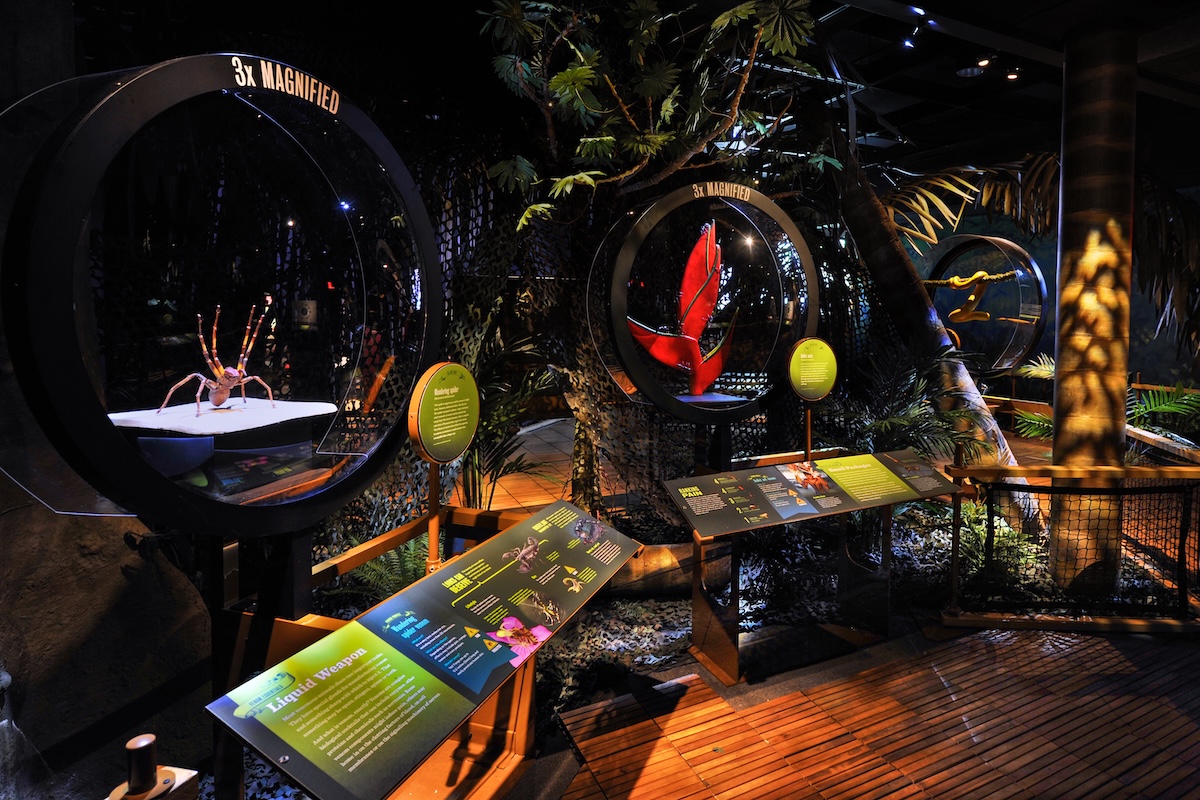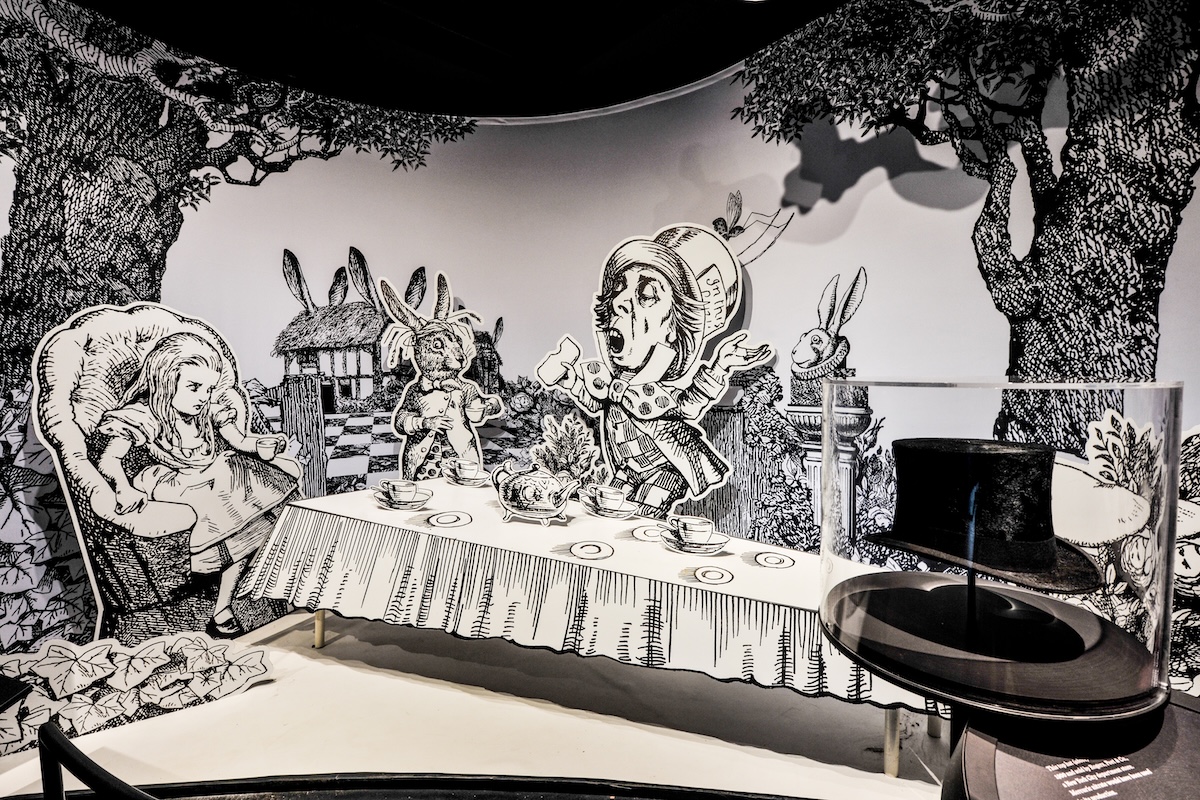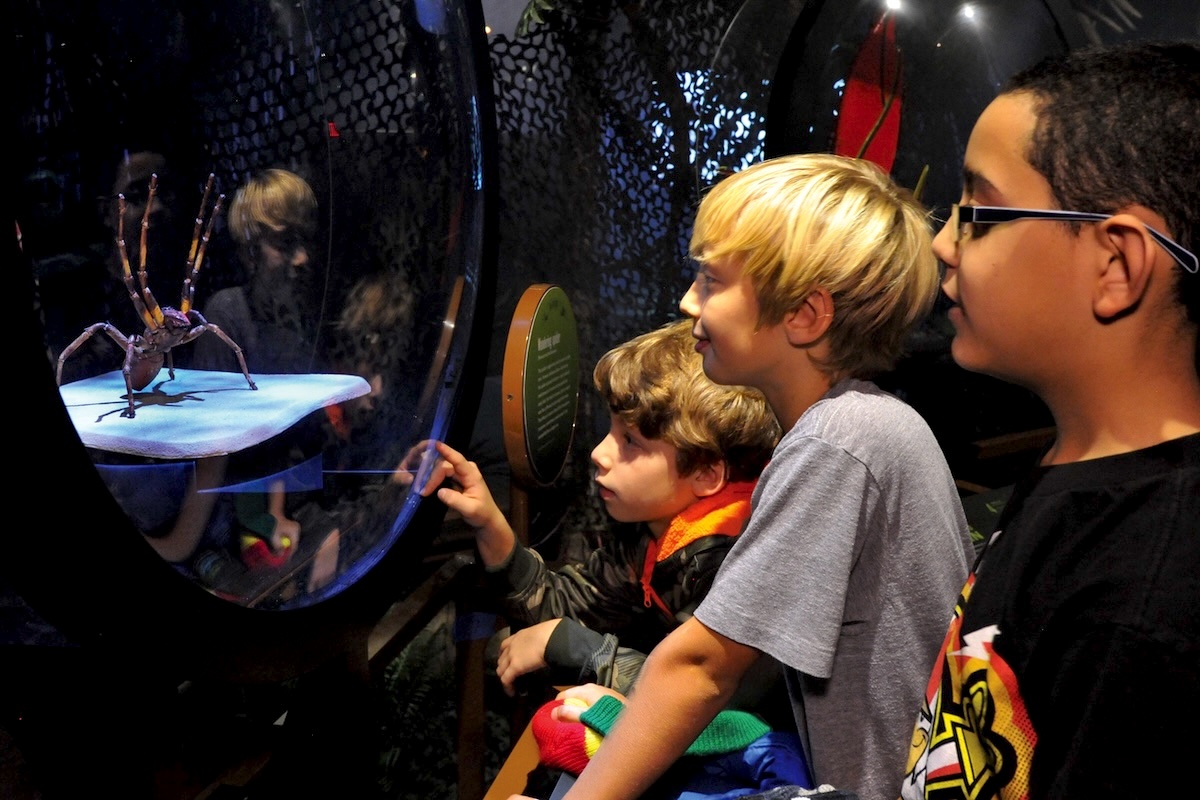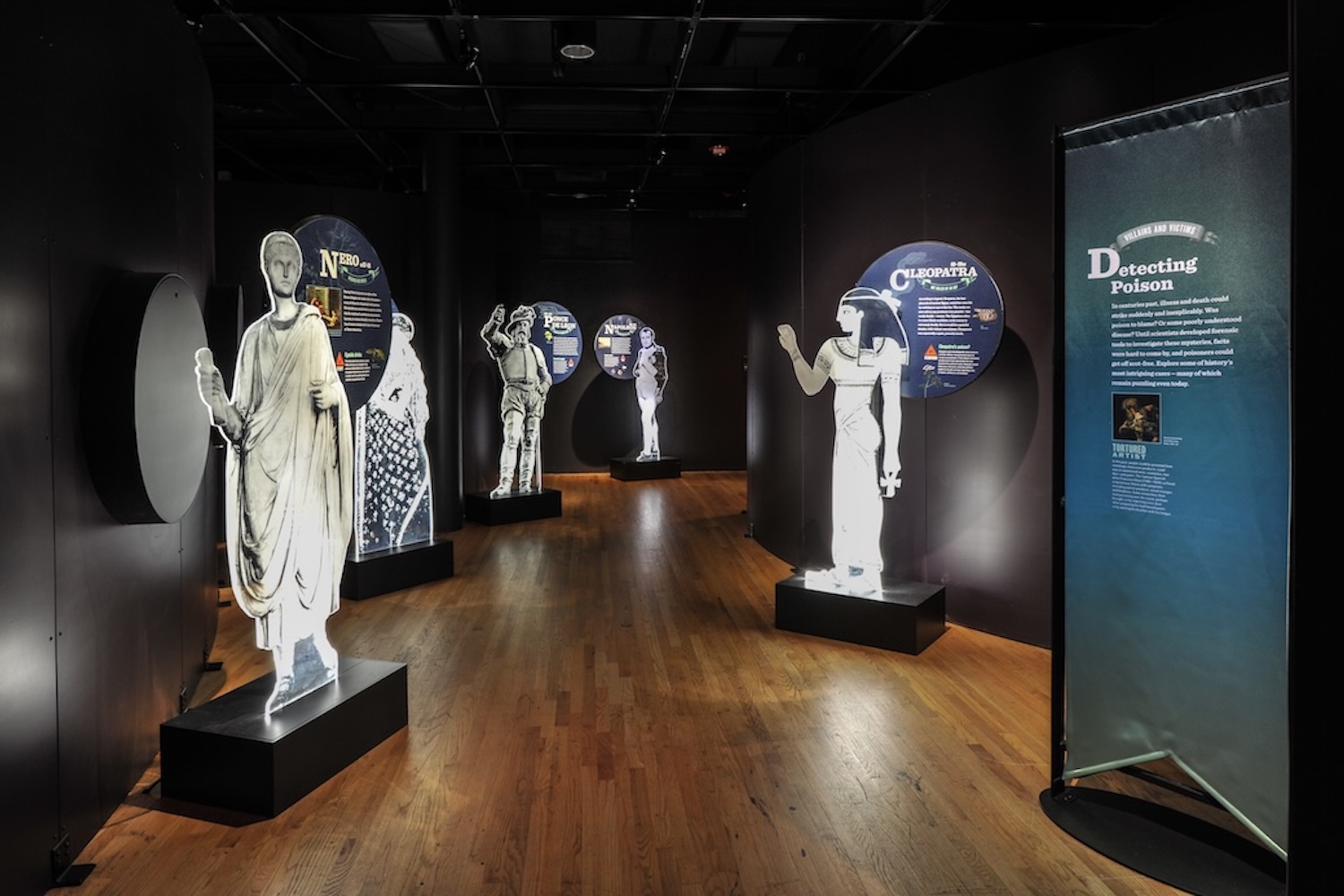
Another Killer Exhibition
February 2 - August 24, 2025
Sybil B. Harrington Gallery, Level 3
Explore the captivating and often paradoxical world of nature’s toxic arsenal in The Power of Poison. Through live performances and interactive dioramas, this spellbinding exhibition will take you into familiar and novel tales of illness, enchantment and death by poison.
Learn about the many plants and animals living deep in the Colombian forest that use poison as a vital tool for defense and survival. Find out how studying poison’s effects on human cells can help scientists figure out how to protect, repair and heal our own bodies and improve our health. Whether used as a defense against predators, a source of magical strength or a lifesaving medical treatment, The Power of Poison is sure to surprise you at every turn!
The Power of Poison is organized by the American Museum of Natural History, New York (amnh.org)
The Power of Poison will be open Tuesday - Sunday from 10:30 a.m. to 4:00 p.m. through Sunday, August 24, 2025. The exhibition is FREE with all Arizona Science Center Memberships, General Admission and All-Inclusive tickets. Children under 3 are always FREE.
Exhibition Walkthrough
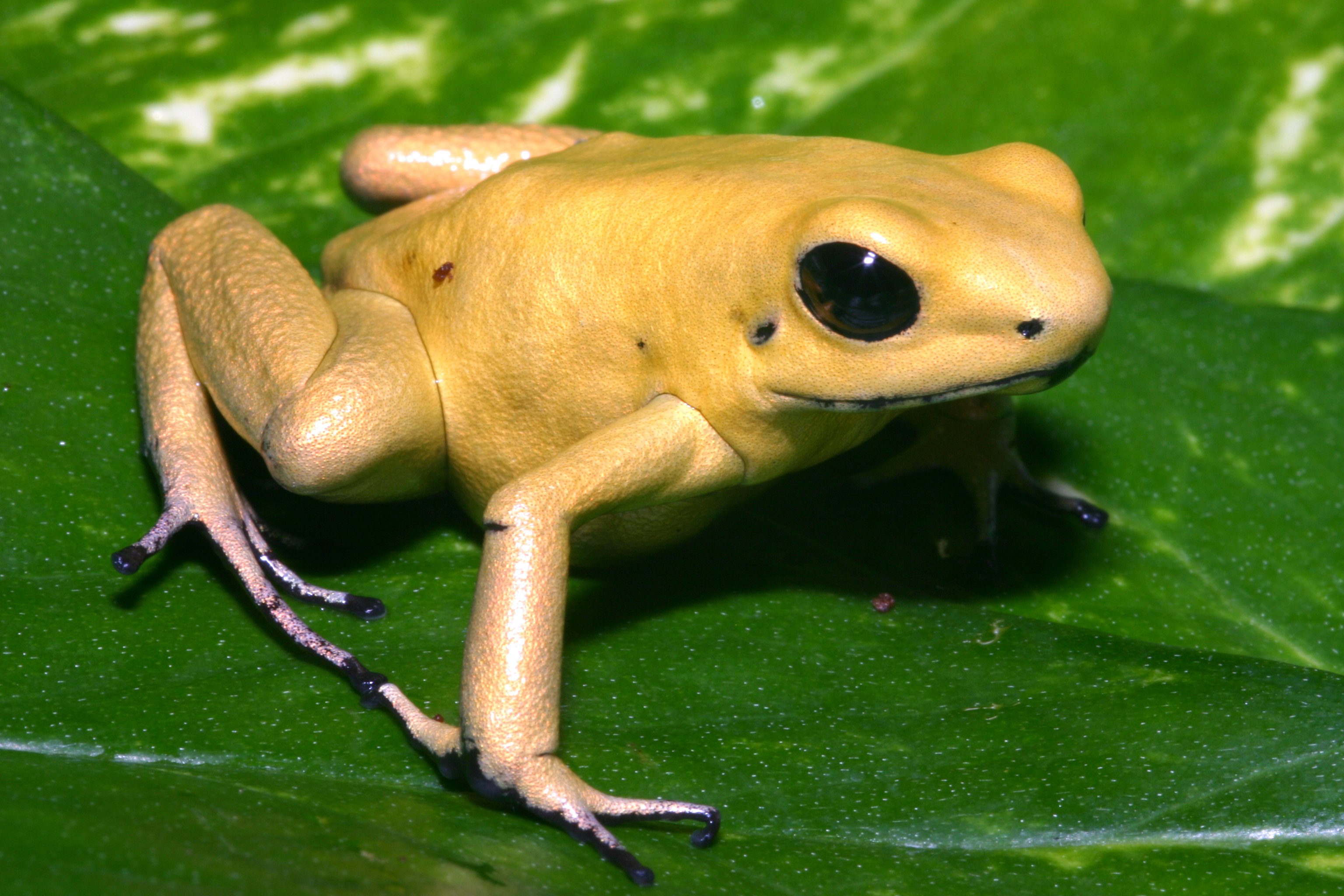
Poison In Nature
Rooted in the ground and besieged by insects and other plant-eaters, land plants have had plenty of time—about 450 million years—to evolve an amazing array of chemical defenses, some of which are only now being discovered. Others have been known for ages.
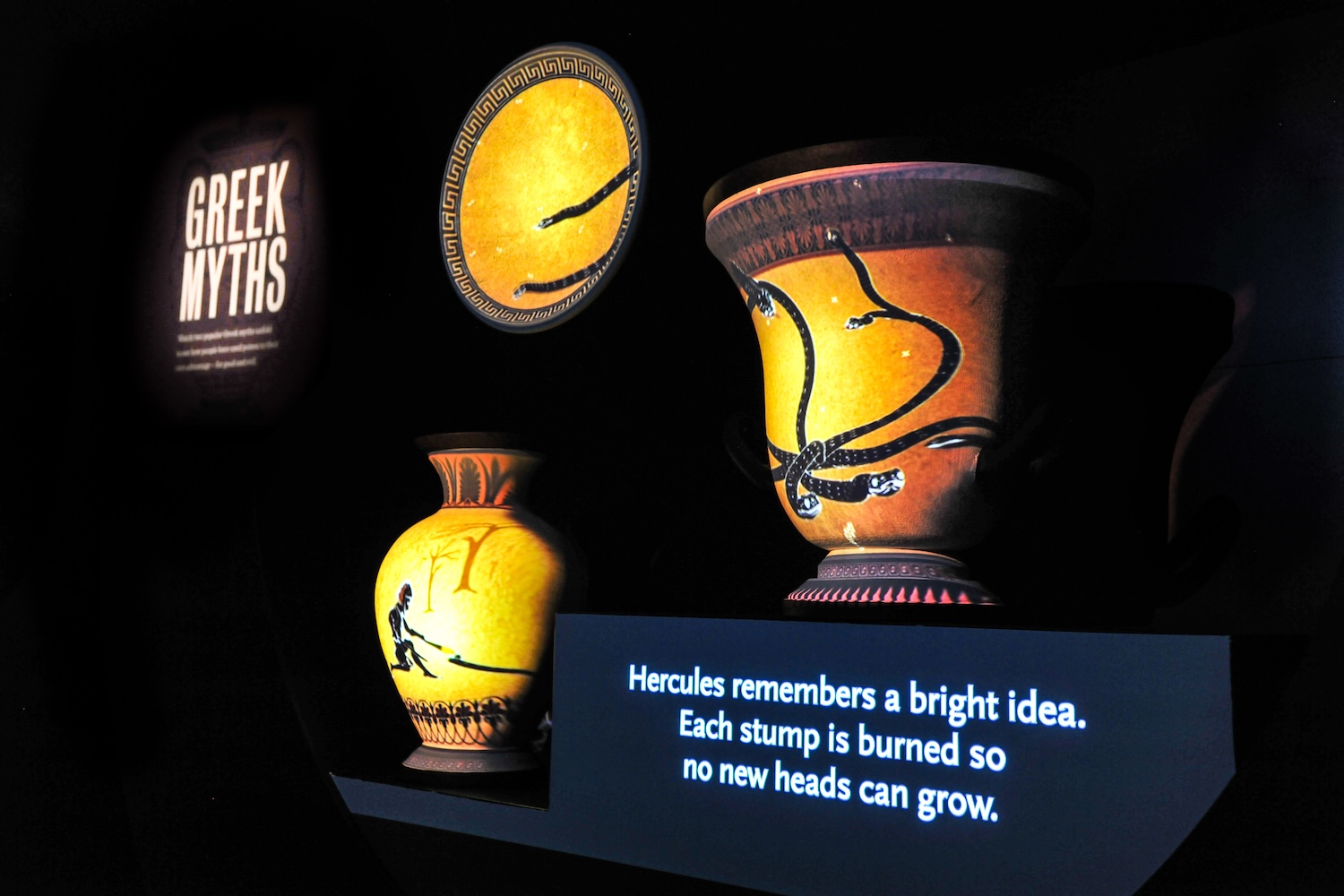
Poison in Myth & Legends
There was a time when magic—not science—was widely used to explain poisonings or sicknesses, a time when the lines between poison, magic, and disease were often blurred. Specialized knowledge of botany—specifically, plants that could heal or harm—was considered a source of power and magic for centuries. A famous scene in William Shakespeare’s Macbeth, which features a trio of witches dropping gruesome ingredients into a boiling cauldron, is just one of several tales and legends re-created in lifesize dioramas in the exhibition’s Poison in Myth and Legend section. Visitors will also be able to examine an “enchanted” book that resembles an ancient botanical volume and watch animations of well-known poisonous plant species, including belladonna and monkshood, “magically” appear with each turn of the page along with origin myths and annotations explaining how these plants were used in the past.
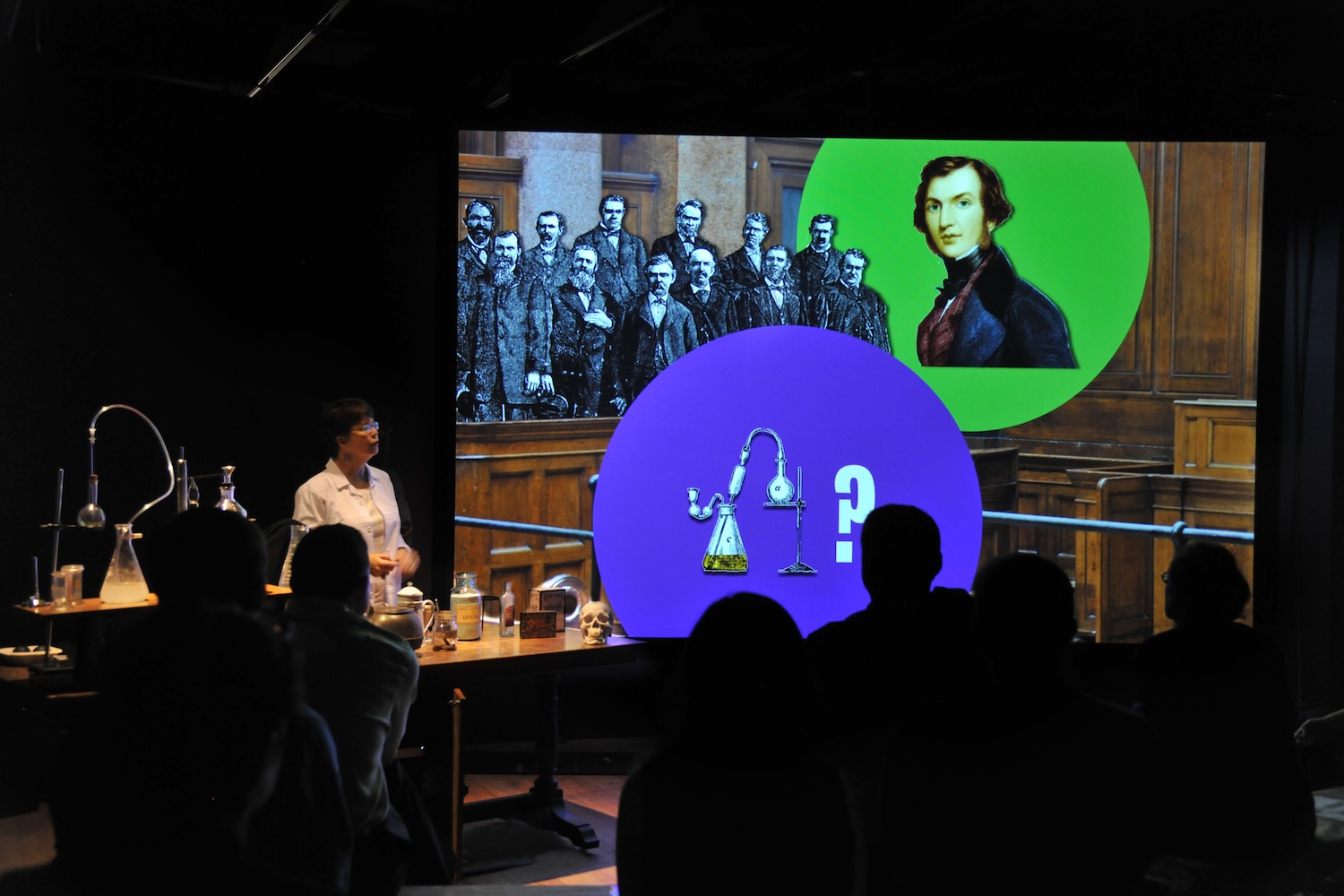
Detecting Poison
Just as the source of disease was mysterious for most of human history, so was cause of death—especially if poison, which in many cases was difficult to detect, was involved. A gallery in the exhibition’s Villains and Victims section considers some of history’s most notorious poisoners and poisonings that still puzzle us today, offering a glimpse of the challenges of detecting poison, especially before toxicology was developed as a scientific discipline in the late 1800s. Still, there are new details to glean about Cleopatra’s death or Napoleon’s decline on Saint Helena from our modern understanding of poisons, even if some cases remain mysteries.
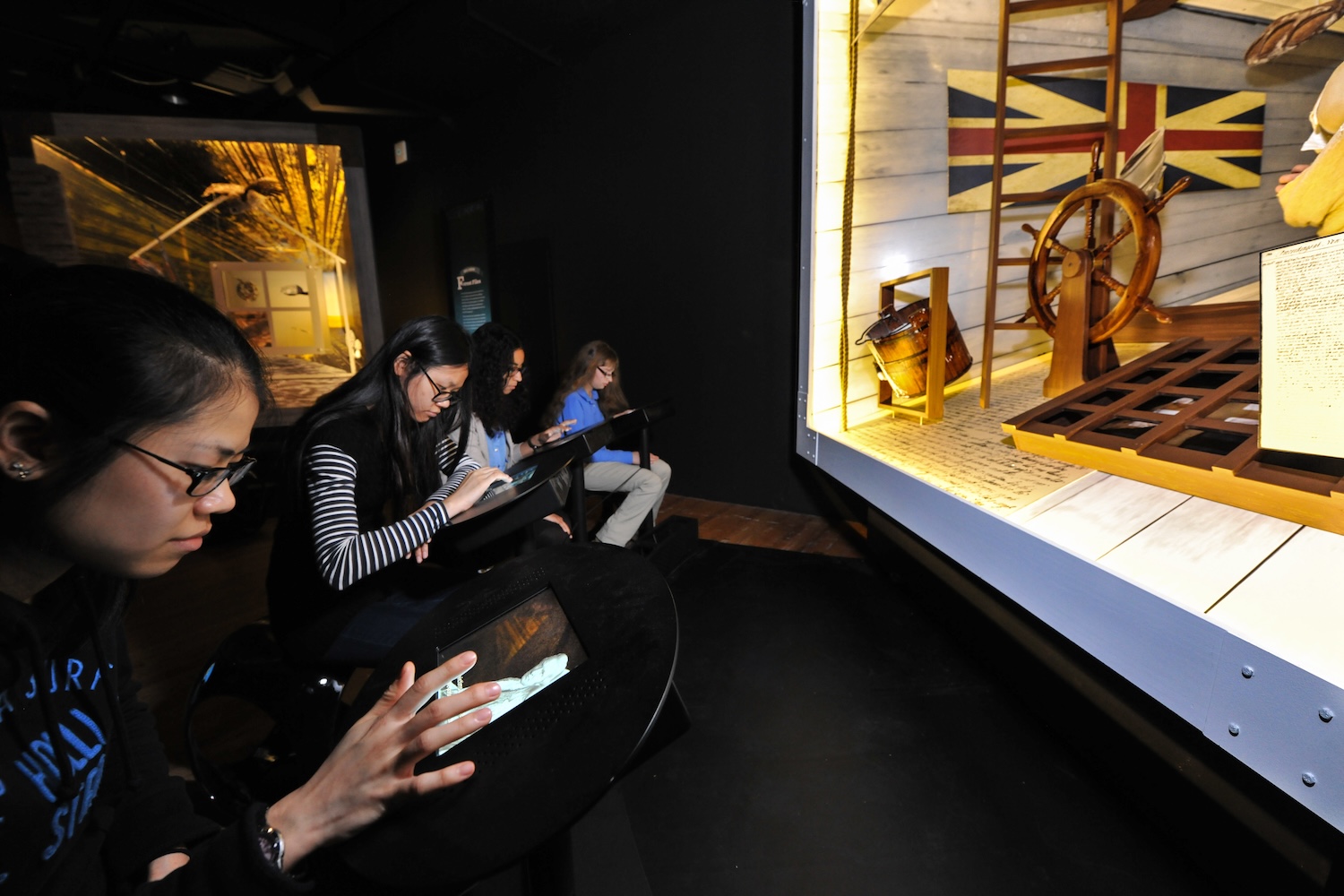
Poison by Accident
Poisoning is not always the result of a criminal action, of course. An iPad game will let visitors play detective by finding clues about various toxins and poisonous creatures and reviewing victims’ symptoms to help solve three puzzling cases of accidental poisonings. These include the mysterious illness of Captain James Cook and two naturalists aboard Cook’s ship, Resolution, in 1774.
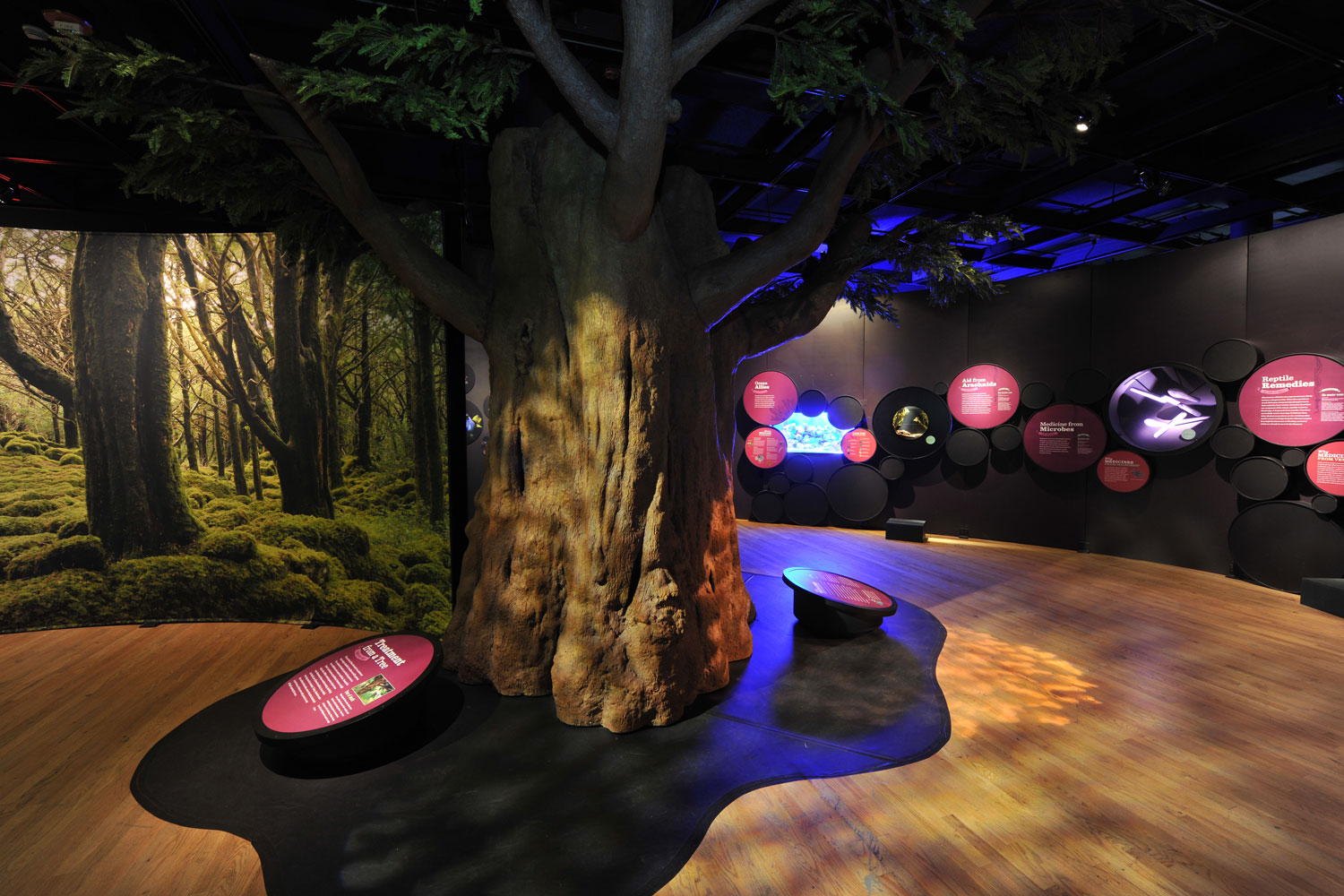
Poison for Good
The field of toxicology was born out of a specific and urgent need—to detect poisons and prevent illness or death. Over the past century, advances in cell biology have allowed scientists to discover different ways in which poisons affect human cells and to figure out how to put that power to work restoring our health. As the Poison for Good section of the exhibition points out, hundreds of species of plant and animal toxins are being studied as sources of potential ingredients for life-saving new drugs.
Exhibition Guides
Extend your experience with our comprehensive Exhibition Guides. Designed to enrich your visit, our guides include educator guides, offering insightful information and engaging activities to deepen your understanding and enjoyment at Arizona Science Center.
Plan Your Visit Today!
The Power of Poison will be open daily from 10:30 a.m. to 4:00 p.m. starting on Sunday, February 2 through Sunday, August 24, 2025. The exhibition is included FREE with your Arizona Science Center Membership or general admission ticket. Kids under 3 are always FREE.

